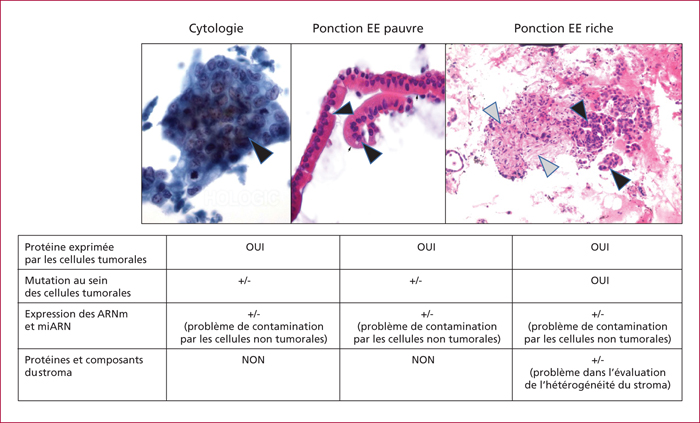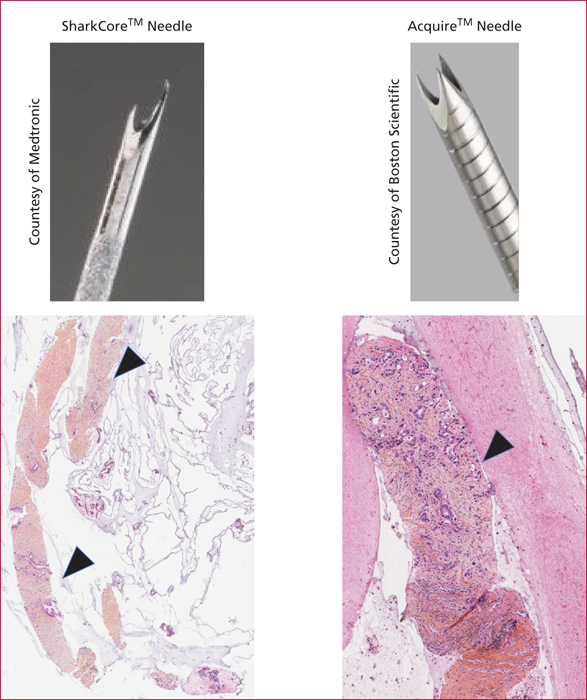Hépato-Gastro & Oncologie Digestive
MENUWhy and how should we improve the molecular performance of EUS-FNA? Volume 24, supplement 2, Juin 2017
Université Paris 7 Diderot,
départment de pathologie,
INSERM U1149,
100 boulevard du Général Leclerc,
92110 Clichy-La-Garenne,
France
Hôpital privé Jean Mermoz,
départment de gastroentérologie,
Lyon,
France
- Key words: pancreatic adenocarcinoma, EUS-FNA, molecular diagnoses, stroma
- DOI : 10.1684/hpg.2017.1442
- Page(s) : 35-41
- Published in: 2017
Most pancreatic EUS-FNA/biopsies are small containing either few isolated tumour cells or rare cell clusters. Yet this is often enough for the diagnosis of pancreatic adenocarcinoma. Recent research studies have demonstrated that pancreatic adenocarcinoma is heterogeneous with several subtypes holding prognostic and therapeutic implications. Similarly, it appears that there is an important heterogeneity in the tumour stroma. The latter being the target of many new drugs in development. The simple diagnosis of pancreatic adenocarcinoma will therefore be no longer sufficient. New needles with cutting edge seem to provide cohesive fragments conserving the tissue architecture. In addition to better stroma characterization, these samples when coupled with advanced genomic and transcriptomic profiling should improve patient selection and care.



